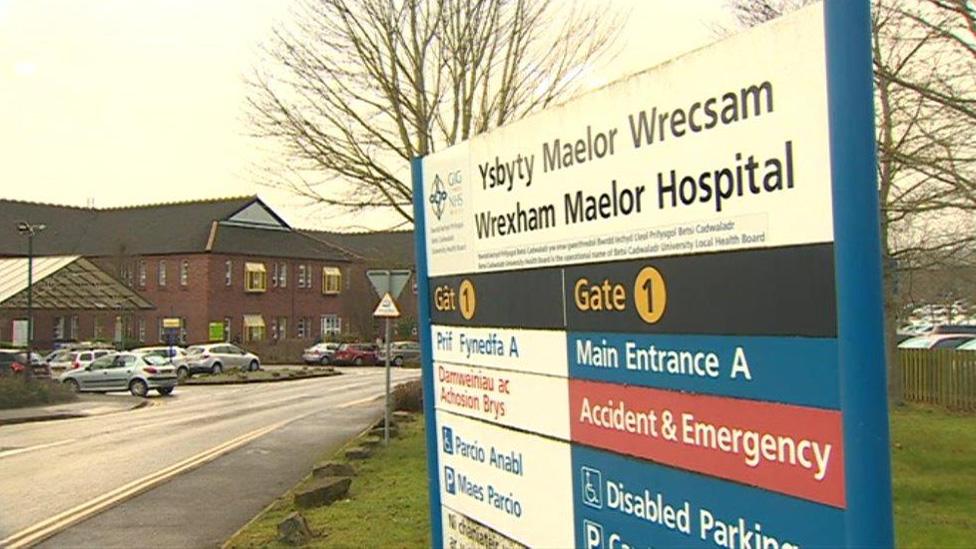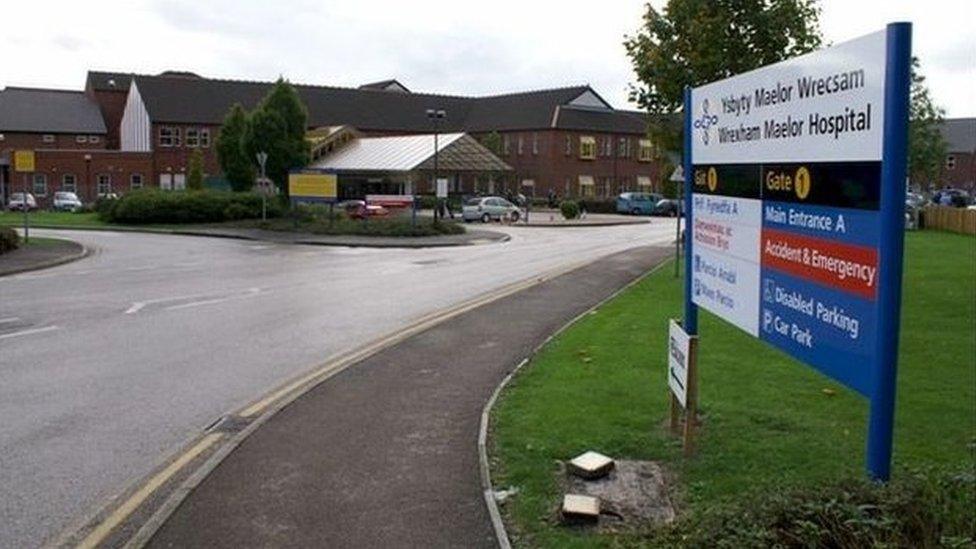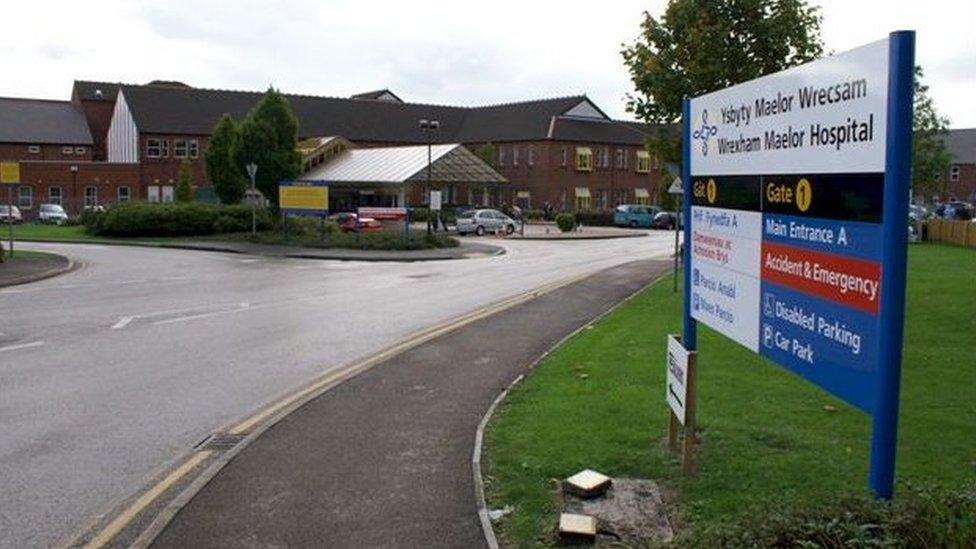Wrexham Maelor and Glan Clwyd hospitals' lowest A&E figures
- Published

Wrexham Maelor hospital saw 5,190 patients at A&E in August
It is the worst accident and emergency unit performance of any hospital in Wales on record.
Fewer than half the patients attending Wrexham Maelor Hospital's A&E are being seen within the four hour target.
Neighbouring Glan Clwyd Hospital hit its own record low in August's figures - only 52.9% were treated, transferred or discharged in time.
Betsi Cadwaladr health board admitted its service was not good enough, adding it was an "extremely busy" period.
Ministers said they "continue to support" the health board. Both hospitals have struggled with the targets over a number of years.
Since January, A&E at Wrexham and Glan Clwyd have been consistently the worst performing Welsh hospitals against the four-hour target.
Over the summer, a coroner warned that lives were being put at risk after the case of a patient who spent five hours waiting outside Wrexham Maelor in an ambulance.
The latest figures came despite fewer emergency patients being seen than in the previous August.
Conservative health spokeswoman Angela Burns AM said: "Everybody knows that NHS staff across the country work tirelessly and passionately but these shocking statistics clearly show that staff and patients are being let down by a complacent Welsh Labour government.
"People in north Wales are sick to the back teeth of how they are being forgotten by the Welsh Government: having seen their health board in special measures for three years."
The Welsh Government said it continued to support Betsi Cadwaldr health board to ensure local people received timely emergency care.
A spokesman added: "We provided £6.8m earlier this year to strengthen the health board's operational capacity at each of the three main hospitals in north Wales, and a further £1.5m over two years to improve performance at Ysbyty Glan Clwyd specifically.
"The NHS Wales delivery unit is also working at the Wrexham Maelor site to support local performance improvement."
The health board said its emergency department at Wrexham had been "extremely busy" and claimed the recent hot weather was a contributing factor.
"The health board acknowledges that despite a significant amount of hard work and focus to improve the flow through our emergency departments, our waiting times within our emergency departments are not the service we should be providing to our community," said Gary Doherty, chief executive of Betsi Cadwaladr health board.
"We are grateful for the investment we have recently received from Welsh Government for additional clinical and operational capacity which will help hugely with delivering improvement with pace before winter sets in.
"We will continue to work with our staff and our partners to improve our services going forward both inside our hospitals and across the health and social care system."
Overall, there were improvements in A&E targets for Wales in August in both the four and 12-hour targets, although Glan Clwyd still has the largest number of patients facing the longest waits (872), compared to just seven in Cardiff.
On the general picture, the Welsh Government said hard-working NHS staff continued to deliver high-quality care during the busy summer months.
A spokesman added: "We are making progress in cutting waiting times for scheduled care, with the percentage of patients waiting less than 26 weeks from referral to treatment in its best position since July 2013.
"The number of patients waiting longer than the target time for diagnostic and therapy services decreased this month and both are notably lower than this time last year.
"For urgent cancer cases 38% more patients started treatment in target time compared with the same 12 month period five years ago."
He added that in the short term, it had invested £30m to cut waiting times further and in the long term recognised the need to transform the way services were delivered.

Analysis by Owain Clarke, BBC Wales health correspondent
By our calculation, this is the worst performance for any major emergency department in Wales since the records began in 2009.
Remember the target is that almost all patients - 95% - should spend no more than four hours in A&E.
The figures show a steady and substantial decline in these key A&E figures at both Wrexham Maelor and Glan Clwyd hospitals over a number of years.
This is at a health board which has been in the spotlight after being put in special measures by the Welsh Government three years ago.
In comparison, almost 90% of patients spent less than four hours in A&E at the best performing hospitals in the Royal Glamorgan hospital in Llantrisant and at Wales' biggest emergency unit - the University Hospital of Wales in Cardiff.
- Published9 July 2018

- Published19 July 2018

- Published3 January 2018
